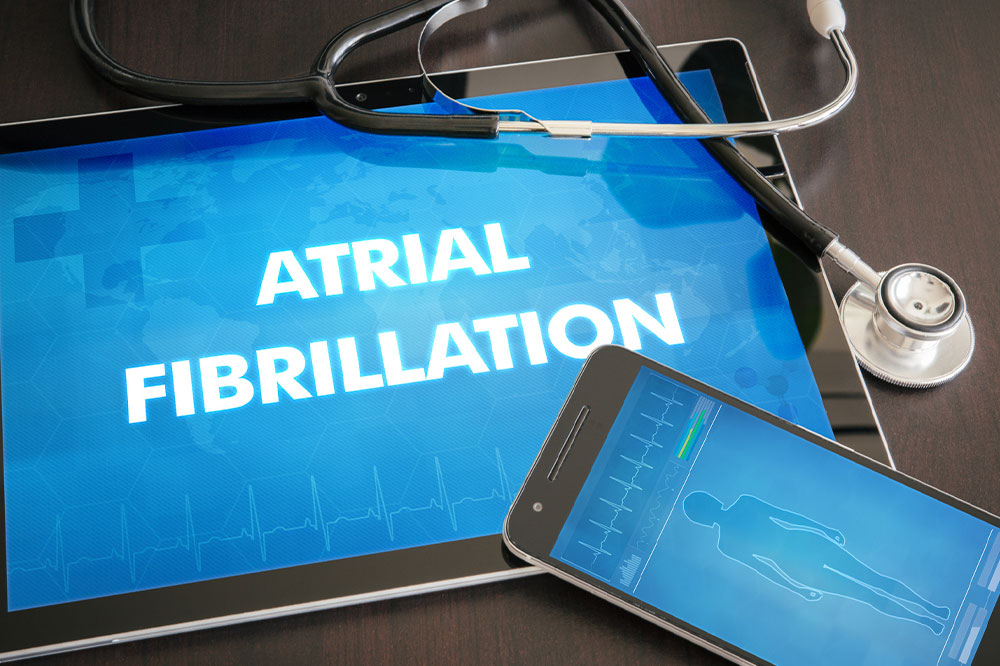
Afib – Types, causes, symptoms, and management
Atrial fibrillation (Afib) occurs when the usually stable and regular electrical impulses in the heart’s upper chambers (atria) begin firing chaotically, causing them to quiver or twitch (fibrillate). This can cause blood accumulation and clotting in the atria. These clots can reach the lungs through the blood vessels and cause pulmonary embolism or can reach the brain, resulting in a stroke. Let’s look at the forms, signs, and causes of Afib and its treatment options:
Types of atrial fibrillation
Afib can be classified as one or more of these:
First-diagnosed Afib: Regardless of symptoms or the number or length of episodes, this refers to individuals diagnosed for the first time with Afib.
Asymptomatic Afib: This condition is also called silent Afib, given the lack of signs or symptoms. A random electrocardiogram (ECG) could reveal asymptomatic atrial fibrillation.
Paroxysmal Afib: Two or more episodes of the conditions that spontaneously resolve within a week are categorized as paroxysmal Afib.
Persistent Afib: This refers to two or more episodes of atrial fibrillation that last seven days or more.
Long-term persistent Afib: If the condition persists for more than a year, it is referred to as long-term persistent Afib.
Permanent Afib: This is a chronic condition that cannot be managed using common treatment options. So here, the patient and doctor decide to stop treatment to get the heart rate back to normal and begin considering other management options.
Causes and risk factors
Typically, the condition is brought on by coronary artery disease or high blood pressure. Often, atrial fibrillation is triggered by an irregular heartbeat. However, it might occasionally be difficult to determine what triggered such irregularity, and there may be no apparent cause in some cases. In most cases, Afib runs in families, so if one has a family history of the condition, i.e., a close relative has the condition, the likelihood of developing the condition increases. Further, the risk of this kind of rhythm disturbance can be a result of factors like:
Cardiomyopathy
Atherosclerosis—the hardening of the arteries—or coronary artery disease brought on by persistent and uncontrolled high blood pressure
Rheumatic heart disease in children
A heart surgery
Heart diseases
Heart valve dysfunction
Pulmonary embolism
Age
Chronic pulmonary disease and stress on physiological processes
Symptoms
Some people may not experience clear Afib symptoms, while others could experience the following:
Feeling faint or light heart palpitations (a feeling that the heart is beating too hard or skipping a beat)
General weakness that cannot be explained by an apparent cause; a quick heartbeat, or an irregular pulse
Breathlessness, especially when exercising, resulting in inexplicable exhaustion
Finding it more difficult to exercise
Management options
Doctors may recommend one or more of the following methods to treat atrial fibrillation, depending on the severity and type:
- Prescription options: The initial line of treatment for atrial fibrillation is prescription options. While these may not treat atrial fibrillation, they frequently assist in making the symptoms bearable. This could include:
Controlling the heart rate : During atrial fibrillation episodes, slowing down or regulating the heart rate can significantly relieve the symptoms. Prescription options are recommended by doctors to regulate heart rate during bouts of atrial fibrillation.Stroke prevention : Patients with a high risk of stroke may be prescribed blood thinners, and other prescriptions may be recommended for those at a lower risk. Devices or surgical options that could eliminate the cause of the stroke may also recommend to patients.
Controlling the heart rhythm : Afib events can be avoided by maintaining the heart’s rhythm in the normal sinus rhythm, i.e., the healthy state. For low-risk patients, prescriptions referred to as antiarrhythmic options can help manage cardiac rhythm.
- Catheter ablation: Here, the doctors may carefully remove portions of the heart tissue. In this minimally invasive operation, doctors focus on eliminating the source of the faulty electrical signals or rerouting the signals that are causing irregularities in the heartbeat. Typically, thin, flexible wires (catheters) are inserted into a vein to the heart. The wire’s tips have electrodes that transmit radio waves, which produce heat and damage the chosen cardiac tissue to stop the abnormal signals in the heart.
- Left atrial appendage closure: People with A-fib who are unable to use blood-thinning treatment options can reduce their risk of blood clots and stroke with LARIAT surgery. Here, the doctor threads a catheter with a suture to the heart. The left upper chamber is then closed, and as a result, blood clots cannot leave the chamber and travel to the brain, where they could cause a stroke. The LARIAT procedure is carried out by making tiny punctures in the skin as opposed to standard surgical procedures, thereby enabling quicker recovery and lower risk of problems.
- Surgical procedures: Some people benefit from surgery, in addition to prescription options and catheter ablation. For those with the conditions listed below, the “traditional” or “cut and sew” MAZE treatment is a surgical option. It is usually recommended when:
Despite other treatments, atrial fibrillation symptoms persist
One experiences serious symptoms
One requires surgery for a valve or a coronary artery bypass graft
One has a heart attackThe MAZE method places electrical barriers or blocks in the atria, the upper heart chambers, which reroute the aberrant electrical signals from the heart that cause atrial fibrillation and restore regular heart rhythm. A heart-lung bypass machine is used during this open-heart surgery, which is conducted by making a sternotomy incision in the patient’s chest.
- Pacemaker: A pacemaker may be helpful for persons with certain heart rhythm issues, especially when the heart pumps too slowly. A pacemaker is a tiny, battery-operated device that administers modest electrical impulses to the heart, assisting it in establishing regular, efficient beats. Permanent pacemakers are placed in the chest using local anesthesia and non-invasive surgery. The doctor will make a tiny incision in the wall of the chest just below the collarbone, after which cables (called leads) are inserted into the upper chest and reach the heart.


